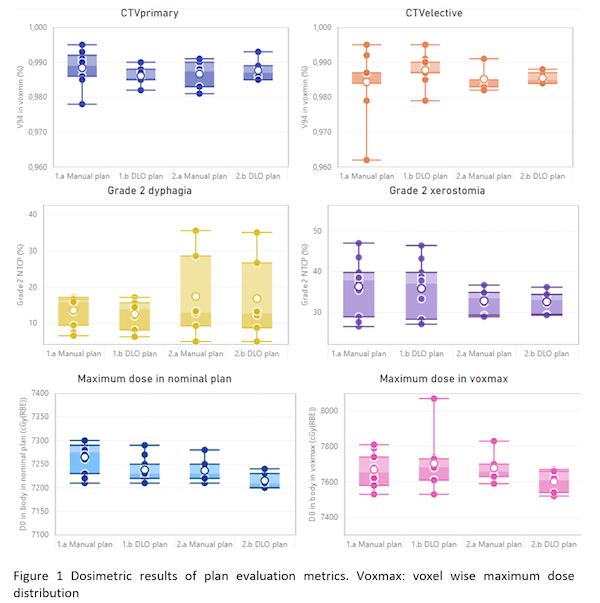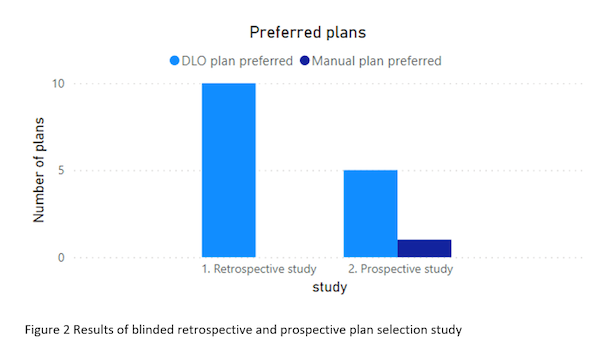Clinical implementation of deep learning automated robust IMPT planning for oropharyngeal cancer
Ilse van Bruggen,
The Netherlands
PD-0251
Abstract
Clinical implementation of deep learning automated robust IMPT planning for oropharyngeal cancer
Authors: Ilse van Bruggen1, Marije van Dijk1, Minke Brinkman1, Mats Holmström2, Edwin Oldehinkel1, Daniel Scandurra1, Johannes Langendijk1, Stefan Both1, Erik Korevaar1
1UMCG, Radiotherapy, Groningen, The Netherlands; 2RaySearch laboratories, Machine learning planning, Stockholm, Sweden
Show Affiliations
Hide Affiliations
Purpose or Objective
Objective
Automated treatment planning is an emerging topic but clinical implementation remains limited, especially in intensity modulated proton therapy (IMPT) planning. The aim of this study was to develop and implement a deep learning based automated treatment planning method for robustly optimized IMPT plans for oropharyngeal carcinoma (OPC) patients and to compare the results with manual robust IMPT plans in a blinded retrospective and prospective study
Material and Methods
Method
For new patients, an IMPT dose distribution was predicted using a Deep Learning Optimization (DLO) model which was trained using contours and doses of 60 OPC patients. A robust mimicking optimization algorithm using voxel-based mimicking and 21 perturbed scenarios was then used to generate a machine deliverable plan from the predicted dose distributions. A radiation therapy technologist (RTT) was allowed to further fine-tune the plan for two hours, e.g. add objectives, change weights of objectives and/or continue optimization. DLO plans were compared with manual plans in a blinded retrospective study (n=10) and prospective study (n=6). All plans were evaluated on clinical target volume D98% voxel-wise minimum dose >94% (using 28- perturbed scenario dose evaluations), maximum dose in the nominal plan <107% and in the voxel wise maximum dose <113%, organ at risk (OAR) dose and normal tissue complication probability (NTCP) (grade 2 dysphagia and xerostomia). Plan evaluation was performed in a multidisciplinary meeting with at least one physician, one physicist and one RTT. The preferred plan in the prospective study was used for treatment.
Results
Results
All DLO and manual plans (16/16) were considered clinically acceptable. The DLO plans were preferred over manual plans in 10/10 patients in the retrospective study (figure 1). In the prospective study, DLO plans were preferred in 5/6 patients (figure 2). In one patient the manual plan was selected for treatment. DLO generated IMPT plans within 30 minutes offline time, including fine-tuning time a deliverable DLO plan was generated in 2.5 hours. Manual plans were generated in 1 to 1.5 days.


Conclusion
Conclusion
We successfully developed and implemented robustly DLO automated IMPT planning for OPC. Our prospective study shows that DLO plans are preferred over manual plans in almost all cases (5/6). This result is in accordance with the findings of the retrospective study.